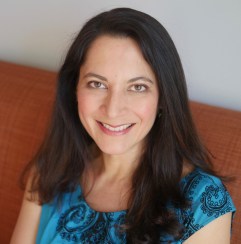
Welcome to STEM Tuesday: Author Interview & Book Giveaway, a repeating feature for the fourth Tuesday of every month. Go Science-Tech-Engineering-Math!
Today we’re interviewing author Nancy Castaldo who wrote this month’s featured conservation book, Back from the Brink: Saving Animals from Extinction.
Find out how seven different animal species from around the world were saved from extinction by hard-working scientists and environmental activists in this book. Nancy Castaldo has used her experience as an environmental educator to create award-winning books about our planet for over 20 years including her 2016 title, The Story of Seeds: From Mendel’s Garden to Your Plate, and How There’s More of Less To Eat Around The World, which earned the 2017 Green Earth Book Award, Junior Library Guild Selection, and other honors. Nancy’s research has taken her all over the world from the Galapagos to Russia. She loves sharing her excitement about nonfiction with readers and fellow writers. Visit her at nancycastaldo.com, on Twitter at @NCastaldoAuthor, or on Instagram at @naturespeak.
 Mary Kay Carson: How did this book come about?
Mary Kay Carson: How did this book come about?
Nancy Castaldo: When I was young I had nightmares of creatures going extinct. I was terrified of losing any endangered species. I still am, but I know that my younger self needed to see hope and learn about the helpers. I wanted to give those stories to my readers. I wanted them to see that we all can make a difference, that every endangered species doesn’t go extinct because of the helpers. And that no matter where you live or how old you are, we all have the ability to join in the bucket brigade. I hope that Back from the Brink does that for my readers.
MKC: Could you share some highlights of doing research for Back from the Brink?
Nancy: Every place I visit for research and photography has been life changing for me. This book, like the others for Houghton Mifflin such as Sniffer Dogs and The Story of Seeds, has taken me to places I only dreamed of visiting. I am a herper at heart, meaning I love reptiles and amphibians. Spending time with the tortoises and marine iguanas in the Galapagos was heaven. Another favorite experience was spending time with the dedicated California condor researchers in the Sespe Wilderness area. Part scientist and part adventurer, these biologists work tirelessly to conserve the condor population, despite continued threats to the birds from lead poisoning and micro-trash litter. It was a joy to enter their world.

MKC: Do you have a STEM background?
Nancy: I do have a STEM background. I completed a biology/chemistry double major in college and was president of the science club. At the same time I was also the co-editor of my college’s literary magazine. I was highlighted when I graduated in the college’s view book with the title, Creative Combinations. I’m still combining, having then went on to get a master’s that focused on children’s literature. Science, writing, and photography are all my passions. I love writing STEM books. I was a curious kid and I love writing for curious readers. I strive to inspire, inform, and empower my young readers because I believe they are our hope for the future. Our world needs them now more than ever.
Purchase Back from the Brink!
MKC: Any recommendations for fans of Back from the Brink?
Nancy: I’m hoping that readers will become inspired and empowered with the success stories in Back from the Brink and want to learn more about these creatures and other endangered species. There are many wonderful fiction and nonfiction books that can continue the experience. I’ve included many in the Learn More section of the book, including Dorothy Patent’s The Buffalo and the Indian, Farley Mowat’s Never Cry Wolf, and Jazynka Kitson’s Mission Wolf Rescue. While these books are great reads, I really hope that my readers will step out into the wild and discover some of these creatures first hand. I list places throughout the country for outdoor, natural sightings in my book.
Praise for Back from the Brink:

- “[Castaldo] offers solid, meaningful suggestions for young readers […] including many, many learning opportunities: things to watch and read, organizations to investigate, websites and parks to explore. Challenging but important reading for the intended audience.”–Kirkus, STARRED review
- “Readers will be moved by Castaldo’s appreciation for these animals.”–Booklist, STARRED review
Win a FREE copy of Back from the Brink! Enter the giveaway by leaving a comment below. The randomly-chosen winner will be contacted via email and asked to provide a mailing address (within the U.S. only) to receive the book.
Good luck!
 Hosting this week is Mary Kay Carson, fellow animal lover, science nerd, and author of Mission to Pluto and other nonfiction books for kids. @marykaycarson
Hosting this week is Mary Kay Carson, fellow animal lover, science nerd, and author of Mission to Pluto and other nonfiction books for kids. @marykaycarson
SaveSave
SaveSave







